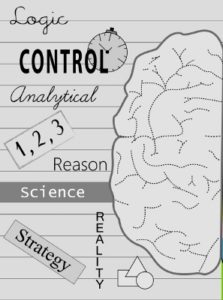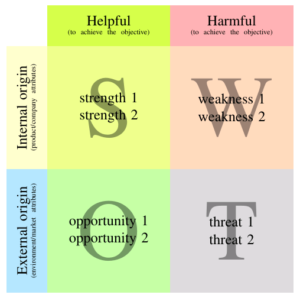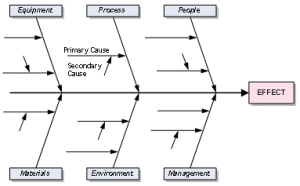 Within months of the June 2016 investigation into a Tesla vehicle crash due to malfunctioning autopilot, CEO Elon Musk showed his commitment to Tesla Motors’ mission to “accelerate the world’s transition to sustainable energy”. He broke ground on a battery plant in Nevada and announced a bid and recently acquired a solar products company that has a similar commitment to sustainable energy.
Within months of the June 2016 investigation into a Tesla vehicle crash due to malfunctioning autopilot, CEO Elon Musk showed his commitment to Tesla Motors’ mission to “accelerate the world’s transition to sustainable energy”. He broke ground on a battery plant in Nevada and announced a bid and recently acquired a solar products company that has a similar commitment to sustainable energy.
What kept Musk going after this crash setback? He (and by extension his company, Tesla Motors) has a compelling mission that he lives and breathes.
This same commitment to accelerating the transition to sustainable energy drives Tesla Motors’ Patent policy, which states the company will not . . .
initiate patent lawsuits against anyone who, in good faith, wants to use its technology. Tesla was created to accelerate the advent of sustainable transport, and this policy is intended to encourage the advancement of a common, rapidly-evolving platform for electric vehicles, thereby benefiting Tesla, other companies making electric vehicles, and the world.
Allowing your competitors to compete against you using your own proprietary information? THAT’s living your company’s mission!
Make Your Mission Statement Mean Something
Some have opined that mission statements don’t really matter but that companies create them anyway because, well, that’s what you do. Yet, just because some companies are not good at creating compelling mission statements and actually using them doesn’t mean that mission statements are “dead”. To the contrary, they are a necessary and valuable component of a well-run corporate strategy.
61% of employees in North America don’t know their company’s mission. – Achievers Survey, September 2015
In fact, your company’s mission statement is part of the guidance system that focuses you on what you are here to do. It keeps your company on track, so you remain focused in a general direction and are less subject to the distraction of every bright, shiny opportunity in the world. Used effectively, your mission should inform your vision, your values, and corporate goals.
To what degree is your mission statement a vital and compelling guide for your business? Here are 3 critical ways to make sure you and your employees are living your company’s mission:
1. Assess How Well the Mission is Resonating
According to a recent survey by achievers.com, 61% of employees don’t know their company’s mission statement. Whether you do a formal or informal survey, find out if your employees know your company’s mission and how much passion there is for it. On a scale from 1-10, where are you? Where is the executive team?
The level of awareness of and passion for your mission is not only an indicator of how well you’ve built the mission into all aspects of the business, but it might also indicate whether you need to punch it up to make it more compelling. Also, take stock of what’s working and what’s not working with respect to how your mission is showing up in your company daily.
2. You Go First
To make your mission statement come alive, you of all people must embody it. How are you and the rest of the executive team helping it come alive or hindering it from doing so? Do you mention the mission statement often? What do you convey to others that shows you used the mission when making a decision? creating a vision for the foreseeable future? or setting a goal? In short, you must intentionally and consistently make others aware that the mission is embedded in all that you do and say.
3. Build the Mission Into Every Aspect of Your Business
In addition, you can ensure employees see the mission in action by using it as the foundation for all work practices, policies, processes and standards of conduct. Here are some ways to do that:
- Make your mission explicit in policies, processes, team charters, etc.
- Ensure each employee knows how their job furthers the mission.
- State it regularly in meetings to set the tone and work it in to every project and assignment.
- Ask employees how their current work furthers the mission.
- Incorporate it in all decision-making regarding products, services, customer service, employees, community relations, etc.
- Be explicit about how new goals, a new vision, new policies, new products, etc. align with the mission.
- Reflect regularly on how well you live it.
- Recognize and adjust obvious practices that are contrary to it.
- When giving feedback, acknowledge the employee’s actions were consistent or inconsistent with the mission.
Your mission serves to keep you on the right track. It is the foundation of the alignment of everything in your company. Make sure you’re getting the most out of it.

 Assuming a new leadership role on the heels of a well-respected predecessor can be exciting and daunting at the same time. Regardless of the circumstances, the challenge is to be authentic while assisting others through the transition from the former leader’s style to yours. Remember that people can accept change if you focus on the nuts and bolts of the transition from Point A to Point B. When you are that Point B, consider the following tips to avoid tripping when stepping into someone else’s shoes:
Assuming a new leadership role on the heels of a well-respected predecessor can be exciting and daunting at the same time. Regardless of the circumstances, the challenge is to be authentic while assisting others through the transition from the former leader’s style to yours. Remember that people can accept change if you focus on the nuts and bolts of the transition from Point A to Point B. When you are that Point B, consider the following tips to avoid tripping when stepping into someone else’s shoes: We are educated. We are modern human beings. We make decisions every day. How inaccurate and incomplete can our thinking be?
We are educated. We are modern human beings. We make decisions every day. How inaccurate and incomplete can our thinking be?

 We laugh at passive aggressive behavior on sitcoms, tune in for more on reality TV, and read the snarkiness on social media. Nonetheless, it’s no laughing matter in the workplace.
We laugh at passive aggressive behavior on sitcoms, tune in for more on reality TV, and read the snarkiness on social media. Nonetheless, it’s no laughing matter in the workplace. We love our drama. Ancient Romans loved the tension and spectacle of the Colosseum with its combat to the death involving gladiators and beasts, nail-biting chariot races, and extravagant displays of sea warfare. Today, we have the tension and spectacle of reality TV, involving the emotional combat of one-up-man-ship, betrayal, and dashed hopes. It seems a natural aspect of the human condition. It’s no wonder, then, that drama comes naturally to your employees.
We love our drama. Ancient Romans loved the tension and spectacle of the Colosseum with its combat to the death involving gladiators and beasts, nail-biting chariot races, and extravagant displays of sea warfare. Today, we have the tension and spectacle of reality TV, involving the emotional combat of one-up-man-ship, betrayal, and dashed hopes. It seems a natural aspect of the human condition. It’s no wonder, then, that drama comes naturally to your employees. It used to be that leading a successful company was all about withholding knowledge, hording power, and smashing the competition. More and more, however, leaders today are called upon to be more collaborative – sometimes even with their competition.
It used to be that leading a successful company was all about withholding knowledge, hording power, and smashing the competition. More and more, however, leaders today are called upon to be more collaborative – sometimes even with their competition.